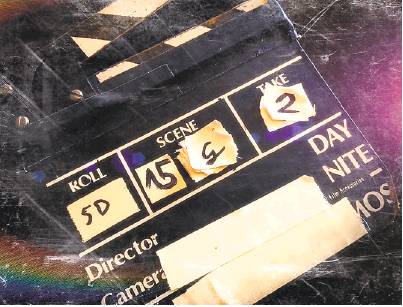Virus may make classic Hollywood fade to black
Closure of nation’s movie theaters because of coronavirus accelerates shift to streaming entertainment
By Jonathan Kuntz
Movies were a toy invented in Thomas Edison’s lab, exploited as a novelty in vaudeville, and spread by nickelodeons.
But movies as the world knows them, grand features with glamorous stars, the greatest of popular cultures, were a creation of Hollywood, specifically folks like Adolph Zukor and William Fox, with the invaluable assistance of Charlie Chaplin and Mary Pickford. Their smash hit business model, the “golden age of cinema,” involved mass production studios cranking out weekly feature programs, with distribution to theaters in every neighborhood, that created a dominant national (and eventually international) culture.
This unprecedented worldwide run was ended by television, which took away the mass audience from the theatrical film, and supplied viewers with something easier, cheaper, and more immediate to consume, though far less grand. The legal decisions that took away Hollywood’s theaters were the blows that spelled the end, but they were doomed the first time someone stayed home to laugh at Lucy, or put their kids in front of Howdy Doody instead of the Saturday matinee.
Classic Hollywood was so powerful, so universal, it took 20 years for it to die, but by 1968 it had become obvious that the old ways could not be revived.
But Hollywood, with impressive skill, reinvented itself in the 1970s. The new Hollywood reshaped itself around production financing and saturation distribution. With the summer blockbuster — beginning with “Jaws” (1975) — films were no longer for everybody, but the new core audience of young, enthusiastic folks proved as willing to spend money as previous generations.
Multiplexes were built, the world market matured, and Hollywood had a second golden age. By the 1990s, digital effects meant filmmakers could put on the screen anything the imagination could conceive. Pervasive advertising could sell this, building excitement for each new big picture. In the 2000s, beginning with The Lord of the Rings trilogy, the tentpole franchise, exploited with countless ancillaries and merchandising, meant one good idea could fuel a decade of profits.
The new Hollywood sailed through the first 15 years of the new millennium.
But like classic Hollywood confronting television, the new Hollywood met a distribution system it couldn’t control. In 2007, Netflix began the shift from mailing out DVDs to streaming; by 2013 Netflix was producing its own content, and new Hollywood was doomed. The closing of theaters by the coronavirus is just hastening trends already in place.
Who needs a 12-screen multiplex, when there is just one must-see movie out this month? Theaters adjusted as best they could — but no amount of recliners, 70mm 3-D with high frame rate exhibition, or gourmet food offerings, was stopping the fact that most screens were playing to empty seats. Dating moved from the back seats of the theater to online apps.
The midlevel film has been in crisis for years.
The spread of the high-speed web in the 21st century is the real virus doing in new Hollywood. And a newer new Hollywood is being hastily constructed to try to meet the challenge. Netflix may have a huge lead, but Disney, with its intellectual property and branding is putting together a monster out of the pieces of old Hollywood that will give them a run for their money.
AT&T Warner HBO and NBC Universal already seem like long shots, but they may yet find a niche. Amazon Prime and Apple have the money and reach to play in this league also. Sadly, Viacom Paramount and Sony Columbia are looking more like the RKOs of the 2020s — former glory will not be enough in this brave new world.
The theatrical window may become a specialty, Imax-like niche; a few blockbusters each year, top ticket event releases in luxury venues. The next generation will grow up with a theatrical experience more like a trip to Disneyland, a big music concert, or a ticket to “Hamilton” — special, expensive, immersive, rare. Everything else will be streaming. Variety weekly box office receipts will be replaced by subscriber totals.
There are losers beyond the Hollywood majors in this system. That shared community experience of the great film on the big screen, the whole neighborhood showing up on Saturday night, the sheer aesthetic joy of a highdefinition image filling the field of view, the immersion in the world of the great drama — what we love about classic films, from “Citizen Kane” to “The Godfather” — may be lost in this new world of mobile screens and interrupted viewing. Hollywood had a great run — an amazing century of worldwide dominance. Out of its remaining pieces, Disney — and a few others — are attempting to build a 21st century entertainment industry.
Will daily consumption of media sink to the short attention span gags on Quibi, Tik Tok or YouTube, or will the creative moviemakers and some farsighted leaders in Hollywood reinvent their industry in the next decade? Will the coronavirus be seen by popular culture historians as the last nail in Hollywood’s coffin, or the signal event that transformed motion pictures from a fading form of entertainment past its golden age into a digital future with unlimited reach and possibilities?
Jonathan Kuntz teaches film history at the UCLA School of Theater, Film & Television, and Los Angeles City College Department of Cinema-TV.
